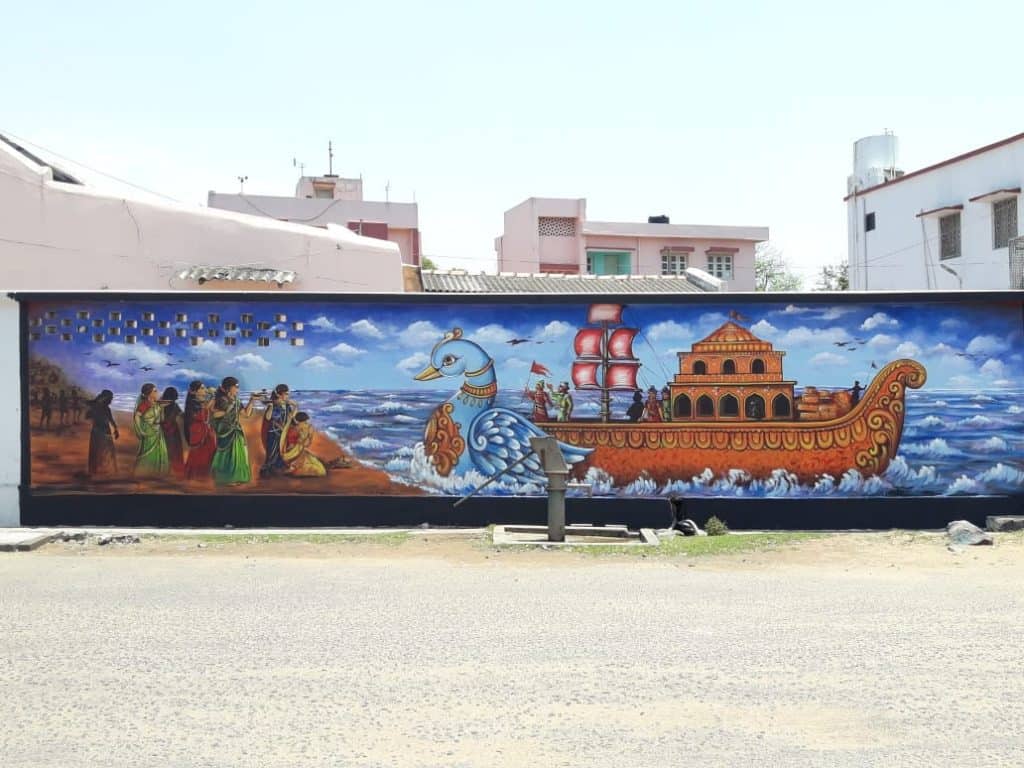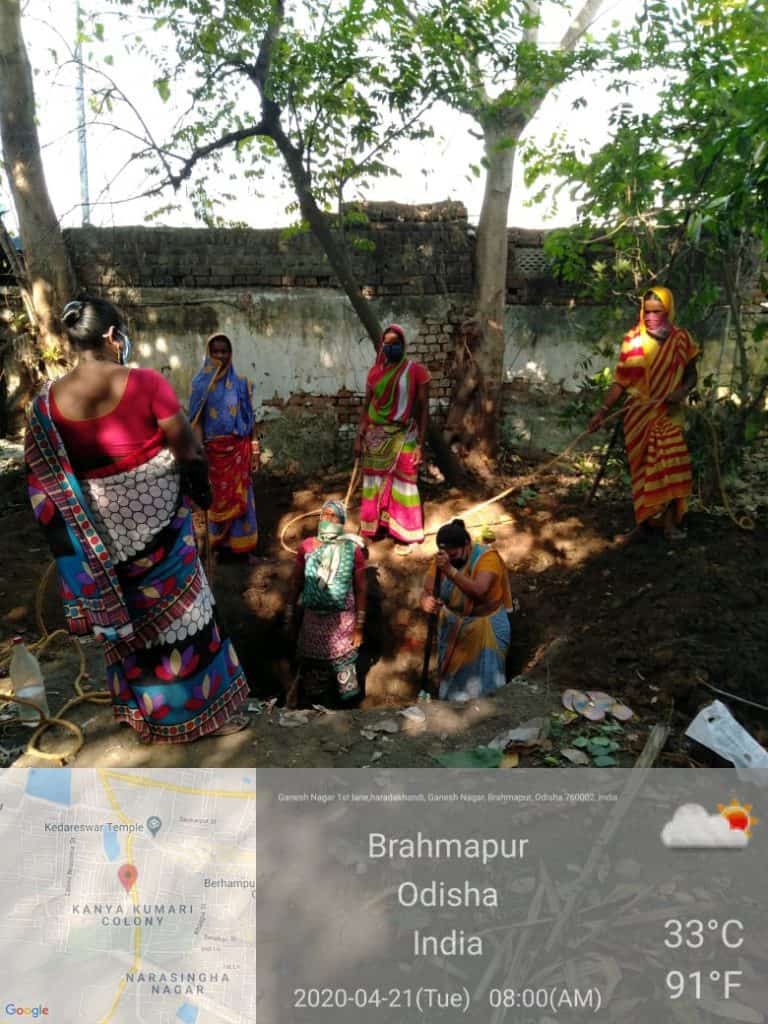Odisha has just added another first to its credit. While others are only talking about putting money in the hands of people, chief minister Naveen Pattnaik announced an Urban Wage Employment Initiative (UWEI) scheme to help the informal work force in the state’s 114 urban local bodies. The initiative envisages immediate execution of all labour intensive projects in the ULBs in the state, with an allocation of Rs 100 crore, including Rs 10 crore to the Bhubaneswar Municipal corporation, to be spent on wages of workers working on these projects during April to September. The state government’s Urban Development and Housing department is the nodal authority to supervise the initiative.
One unique feature of UWEI is that women self-help groups (SHG) will be partners in execution of all works. Pattnaik is exploring keeping this scheme going even after the COVID infections subside. The Centre, too, has taken note of this scheme and has recommended states try and adapt it to their needs, said a senior government officer.
According to figures available with the state, urban local bodies of Odisha have 16 lakh families out of which 4.5 lakh families or around 20 lakh people work in the informal sector for whom this scheme has been targeted. UWEI is a component under UNNATI, a programme included in the state budget to fill critical gaps in urban infrastructure, which is now being fast tracked.
“The new scheme resembles the MNREGA scheme in rural areas,” said Pratap Jena, minister for Urban Development and Housing, Panchayati raj and Law. “The latter is a central programme to engage the rural poor in labour intensive works whereas UWEI is a state government programme funded from its own budget to provide jobs to the urban poor through labour oriented works”.
Work underway
Work under the UWEI has started in some ULBs like Berhampur, Paradeep, Gopalpur and Joda. All ULBs have been asked to issue work orders by May 20th after giving estimates and getting approval from the ward committees. It is too early to estimate total number of jobs generated as work has started in only for ULBs, with another 110 ULBs yet to give estimates and get approvals. The objective of course is to cover all 20 lakh workers.
Under this initiative, works will be identified in ULBs that will provide temporary employment to the urban poor; such works will look at monsoon-preparedness and creation of public assets and maintenance of urban centres.
Odisha typically receives high rainfall over a short time and the idea is to create systems to conserve rain water, prevent flooding and beautify the state’s urban areas. Rain water harvesting structures are to be constructed to conserve water and recharge ground water sources and natural ponds and reservoirs.
Desilting and repair of storm water drains will be done to prevent local flooding. In addition, there will be development of new water bodies, public parks and playgrounds based on local needs and land availability, all with proper walking tracks, adequate lighting, drinking water, toilets, garbage bins and aplenty of greenery. Manual clearing of water hyacinths in existing ponds and plantation drives on public land, roadsides and on river banks are envisaged.
All work will be done using only manual labour. Unemployed labourers will be identified for these jobs and will be assigned work according to their skills. In sanitation, clearance of construction and demolition waste and processing of the same through SHGs for recycling and reuse are to be taken up.
This initiative is also expected to give a fillip to the suppliers of needed material, though a 70:30 ratio is envisaged between wages and material purchase. With a view to creating an inclusive capital with an engaged and healthy community, micro-community centres or SHG work centres, which will also serve as children’s play area, will be created in each town ward where the community can engage in economic activities which they cannot do from home. Local artisans will be employed in the beautification initiatives which will include wall paintings and murals.

Empowering womens SHGs
For the first time, execution responsibility for the various works under this scheme has been entrusted to rural and urban SHGs, for whom the CM created a separate department named ‘Mission Shakti’. Under UWEI, work orders for projects costing less than Rs 1 lakh will be given to competent SHG/slum dwellers associations.
The latter will get 7.5% or Rs. 7500/- as supervision charge, free of tax, said an official. If the project cost is more than Rs 1 lakh, the SHG will be the implementation partner and get paid to hire labourers and supervise work execution. “This programme will take SHGs to a higher level,” said a senior officer of urban development department. In Bhubaneswar, 40 SHGs have been entrusted with the job of municipal tax collection too.

In UWEI, payment to workers will be by weekly direct benefit transfer (DBT) to their bank account. The other urban local bodies included in this scheme are Cuttack, Rourkela, Sambalpur and Berhampur which have been allocated Rs. 5 cr each. Four district town ULBs including Puri have been sanctioned Rs. 1.67 cr each while 44 municipalities have been given Rs. 94 lakh each. The ULBs will ensure social distancing and other covid related health precautions are followed at work sites.
It is not clear as yet how many SHGs across all ULBs will actually be involved in the UWEI works. Mrs Saraswati Sethi, 40, in charge of Manini SHG of Jagabandhu Sahu in Berhampur said their group with ten members completed a water harvesting structure during April 20-30th, at a cost of Rs. 22,000.
“Initially, the SHG had to pay Rs. 250 as daily labour charge to workers which municipal authorities are to reimburse, but now we have been told that payment will go to accounts of workers in DBT,” said Saraswati. “We are worried whether workers will return our money after they get the DBT”. Municipal officials have told her SHG to generate more work.
In Berhampur and Gopalpur on Sea, some wall paintings have been done with other projects in progress. In Paradeep port city in Jagatsinghpur district, Mrs Saraswati Panda from Tejaswini said they have been given drainage work which is underway. Most ULBS have launched projects decided in consultation with ward level committees.
The initiative is considered unique in that it attempts to achieve convergence of a number of critical areas of urban development—- employment to workers from the unorganized sector, empowerment of SHGs especially marginalized womens groups, protection of environment, creation of community assets and building partnership with community based institutions to achieve community centric and community led development.